
Pamplona: The Heartbeat of Navarra
Discover Pamplona: A city of rich history, vibrant festivals, and delectable cuisine in the heart of Spain's Navarra region.
Pamplona, nestled in the northern region of Spain, is renowned for its vibrant culture, rich history, and the world-famous San Fermín festival. As the capital of Navarra, this city offers an enticing blend of modernity and tradition, making it a must-visit destination for any traveler. The city's old quarter, Casco Viejo, is a labyrinth of narrow, cobblestone streets lined with charming cafes, tapas bars, and historic buildings. Here, you can explore iconic landmarks like the impressive Pamplona Cathedral, a stunning example of Gothic architecture with breathtaking views from its bell tower. The Plaza del Castillo, the city's bustling main square, is the perfect spot to sip on a café con leche and watch the world go by. Pamplona is perhaps best known for the Running of the Bulls, part of the San Fermín festival held every July. This adrenaline-pumping event draws visitors from around the globe, eager to witness or even participate in the thrilling run. Beyond the festival, Pamplona offers beautiful parks like the expansive Taconera Gardens, where you can unwind amidst lush greenery and spot local wildlife. Food lovers will be delighted by Pamplona's culinary scene, which boasts a variety of traditional Basque and Navarra dishes. Indulge in pintxos, the region's version of tapas, at local bars or enjoy a hearty meal at one of the city's many excellent restaurants. Don't miss out on the local wines and ciders that perfectly complement the flavors of the region.
Local tips in Pamplona
- Visit during the San Fermín festival in July for an unforgettable experience, but book accommodation early as the city gets very crowded.
- Wear comfortable walking shoes to explore the old quarter's cobblestone streets.
- Try the local pintxos and pair them with a glass of Navarra wine.
- Take a stroll in Taconera Gardens for a peaceful retreat from the city's hustle and bustle.
- Learn a few basic Spanish phrases; while many locals speak English, they appreciate the effort.
- Visit the Pamplona Cathedral and climb the bell tower for panoramic views of the city.
Pamplona: The Heartbeat of Navarra
Pamplona, nestled in the northern region of Spain, is renowned for its vibrant culture, rich history, and the world-famous San Fermín festival. As the capital of Navarra, this city offers an enticing blend of modernity and tradition, making it a must-visit destination for any traveler. The city's old quarter, Casco Viejo, is a labyrinth of narrow, cobblestone streets lined with charming cafes, tapas bars, and historic buildings. Here, you can explore iconic landmarks like the impressive Pamplona Cathedral, a stunning example of Gothic architecture with breathtaking views from its bell tower. The Plaza del Castillo, the city's bustling main square, is the perfect spot to sip on a café con leche and watch the world go by. Pamplona is perhaps best known for the Running of the Bulls, part of the San Fermín festival held every July. This adrenaline-pumping event draws visitors from around the globe, eager to witness or even participate in the thrilling run. Beyond the festival, Pamplona offers beautiful parks like the expansive Taconera Gardens, where you can unwind amidst lush greenery and spot local wildlife. Food lovers will be delighted by Pamplona's culinary scene, which boasts a variety of traditional Basque and Navarra dishes. Indulge in pintxos, the region's version of tapas, at local bars or enjoy a hearty meal at one of the city's many excellent restaurants. Don't miss out on the local wines and ciders that perfectly complement the flavors of the region.
When is the best time to go to Pamplona?
Iconic landmarks you can’t miss
Ciudadela de Pamplona
Discover the historic Ciudadela de Pamplona, a 16th-century fortress surrounded by lush gardens, blending history, culture, and relaxation in one stunning location.

Plaza de Toros
Discover the iconic Plaza de Toros in Pamplona, a cultural landmark where tradition meets vibrant local festivities.
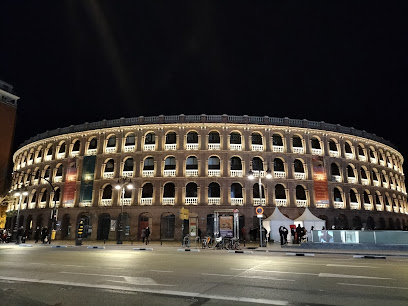
Plaza del Castillo
Experience the vibrant culture and historical charm of Plaza del Castillo, the heart of Pamplona, surrounded by stunning architecture and lively cafes.
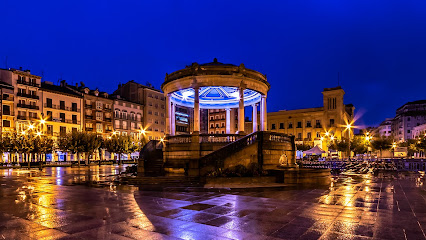
Café Iruña
Experience the charm of Pamplona at Café Iruña, where tradition meets taste in the heart of the city.

Catedral Metropolitana de Santa María la Real de Pamplona
Explore the stunning Gothic architecture and rich history of Catedral Metropolitana de Santa María la Real de Pamplona, a must-visit jewel in Navarre.

Encierro/Entzierroa Monument
Discover the Encierro Monument in Pamplona, a stunning tribute to the thrilling Running of the Bulls tradition that captivates visitors with its artistry and cultural significance.

El Sadar Stadium
Experience the exhilarating atmosphere of El Sadar Stadium in Pamplona, home to the passionate Osasuna football club and a hub of local culture.

Plaza de los Fueros
Explore the lush beauty and cultural vibrancy of Plaza de los Fueros, a must-visit park in the heart of Pamplona, Spain.

Saint Nicholas Church
Discover the beauty and history of Saint Nicholas Church, a stunning architectural gem in Pamplona's vibrant cultural landscape.

Monument to the Fueros
Explore the Monument to the Fueros in Pamplona, a tribute to Navarre's historical rights and a stunning landmark in the city's vibrant old town.

Nafarroako Museoa
Explore Navarra's artistic heritage at Nafarroako Museoa in Pamplona, showcasing rich collections from prehistoric to contemporary art.

Ayuntamiento de Pamplona
Explore the Ayuntamiento de Pamplona: A stunning Baroque city hall that embodies the history and culture of this vibrant Spanish city.

Portal of Zumalacarregui
Explore the historical significance and architectural beauty of the Portal of Zumalacarregui in Pamplona, a must-see landmark for all travelers.

La Vuelta del Castillo - Gazteluko Ibilaldia
Explore La Vuelta del Castillo, Pamplona's serene city park, offering lush landscapes and historical charm for a perfect getaway.

Iglesia de San Saturnino
Discover the stunning architecture and deep historical significance of the Iglesia de San Saturnino in Pamplona, a must-visit Catholic church for every traveler.
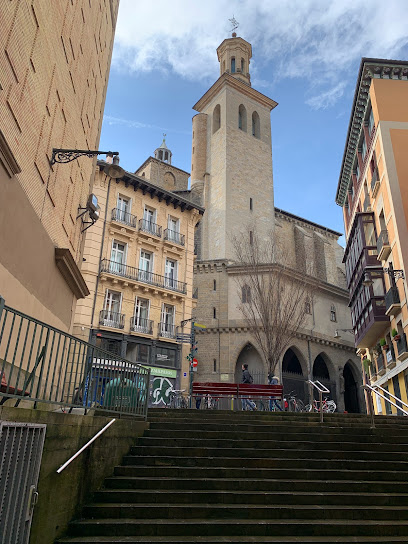
Unmissable attractions to see
Royal Palace of Olite
Discover the enchanting Royal Palace of Olite, a historical gem in Navarre showcasing stunning architecture and rich royal history.
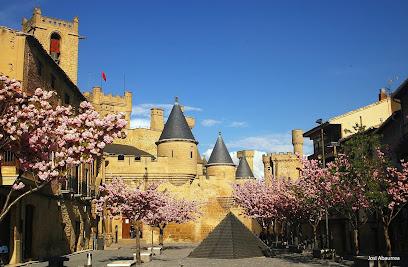
Ciudadela de Pamplona
Explore the Ciudadela de Pamplona, a historic fortress offering stunning architecture, lush gardens, and a glimpse into the rich history of Navarre.

Plaza de Toros
Experience the historic Plaza de Toros in Pamplona, a stunning bullring and cultural hub showcasing Spain's rich traditions and vibrant local life.

Catedral Metropolitana de Santa María la Real de Pamplona
Explore the breathtaking Catedral Metropolitana de Santa María la Real de Pamplona, a Gothic masterpiece brimming with history and artistic splendor.

Parque yamaguchi
Explore the lush landscapes and tranquil waters of Parque Yamaguchi, Pamplona’s serene escape into nature amidst urban charm.

Parque Antoniutti
Explore the lush landscapes and vibrant gardens of Parque Antoniutti, a serene park in Pamplona perfect for relaxation and leisure.
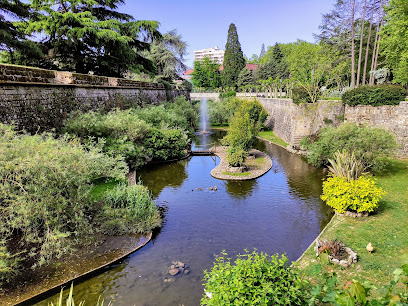
Real Colegiata de Santa María de Roncesvalles
Experience the spiritual and architectural grandeur of the Real Colegiata de Santa María de Roncesvalles, a historic gem on the Camino de Santiago.

Plaza de los Fueros
Discover the beauty and culture of Plaza de los Fueros in Pamplona, a serene park perfect for relaxation and local events.

Monument to the Fueros
Discover the historical significance of the Monument to the Fueros in Pamplona, a tribute to the ancient rights of the Navarrese people amidst picturesque surroundings.
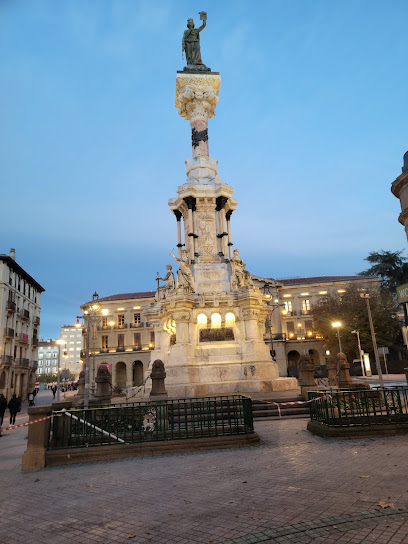
Nafarroako Museoa
Explore the rich tapestry of Navarre's history and art at Nafarroako Museoa in Pamplona, where every exhibit tells a story.

Parque del Mundo
Experience the tranquility and beauty of Parque del Mundo, a lush urban park in Pamplona, perfect for relaxation and family fun.

University Museum of Navarra
Explore the University Museum of Navarra and immerse yourself in a world of artistic wonders and cultural heritage in Pamplona.

La Vuelta del Castillo - Gazteluko Ibilaldia
Explore the serene La Vuelta del Castillo - Gazteluko Ibilaldia in Pamplona, where natural beauty meets historical charm in a tranquil city park.

Iglesia de San Saturnino
Discover the historical and architectural beauty of Iglesia de San Saturnino, a serene sanctuary in the heart of Pamplona's vibrant city life.

Corrales de Santo Domingo
Discover the Corrales de Santo Domingo, a cultural gem in Pamplona, where the thrill of the San Fermín Festival meets rich Basque traditions.

Essential places to dine
Bar Gaucho
Experience authentic Spanish tapas at Bar Gaucho in Pamplona - a vibrant culinary destination offering delicious pintxos and local wines.

Iruñazarra
Discover Iruñazarra: A top-rated restaurant in Pamplona serving exquisite tapas and grilled delicacies in a vibrant setting.

La Mandarra de La Ramos
Experience authentic Spanish grilling at La Mandarra de La Ramos in Pamplona – where tradition meets flavor.

Asador Olaverri
Experience the authentic taste of Navarra at Asador Olaverri – where premium grilled meats meet exceptional hospitality.

Asador Katuzarra
Experience authentic Navarre cuisine at Asador Katuzarra in Pamplona - where grilled meats meet warm hospitality.
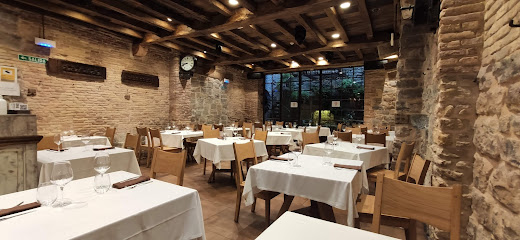
Restaurant Baserriberri
Savor exquisite Basque cuisine at Restaurant Baserriberri in Pamplona - where tradition meets innovation in every dish.

Restaurante La Tagliatella | Plaza del Castillo, Pamplona
Savor authentic Italian cuisine at Restaurante La Tagliatella in Pamplona's historic Plaza del Castillo.
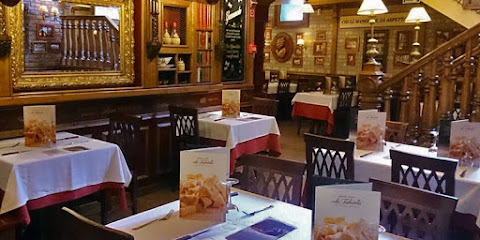
La Olla
Discover authentic Navarre cuisine at La Olla in Pamplona, where traditional flavors meet modern dining experiences.

Chez Belagua Basque Cider House
Experience authentic Basque cuisine with delicious grilled meats and refreshing ciders at Chez Belagua in Pamplona.
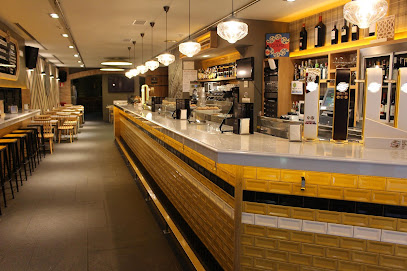
Bar Restaurante -San Nicolás La Cocina Vasca-
Experience authentic Basque cuisine at Bar Restaurante - San Nicolás La Cocina Vasca in Pamplona, where every meal is a celebration of flavor.

El Mercao
Experience the best of Mediterranean and Spanish cuisine at El Mercao in Pamplona - where every dish is crafted with passion.
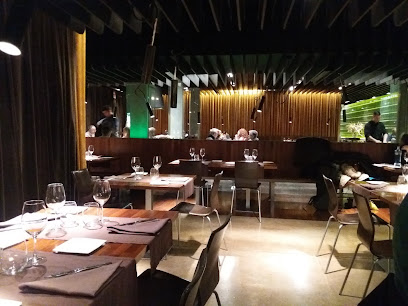
Herriko Taberna
Discover the flavors of Basque cuisine at Herriko Taberna, where every meal tells a story of tradition and taste in the heart of Pamplona.

La Mar Salada
Experience the essence of Mediterranean cuisine at La Mar Salada - where every rice dish tells a story.

New Trujal
Savor authentic Navarre flavors at New Trujal – Pamplona's beloved tapas bar offering delightful dishes and local wines.
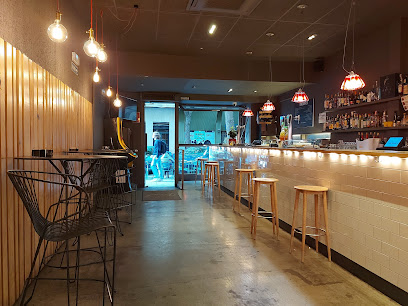
Restaurante Anttonenea
Experience the best of Basque cuisine at Restaurante Anttonenea in Pamplona - where tradition meets flavor in every dish.

Markets, malls and hidden boutiques
El Corte Inglés Pamplona
Explore El Corte Inglés Pamplona for an unmatched shopping experience in the heart of Navarra, featuring diverse shops, delicious dining, and local culture.

Boutique Nespresso García Ximénez
Explore Boutique Nespresso García Ximénez in Pamplona for an exceptional coffee experience with a unique selection of premium blends and machines.

Clothing store something nice Pamplona
Explore trendy fashion at Something Nice, Pamplona's premier dress store for unique and stylish clothing options.

Zona
Experience elegance at Zona, Pamplona's premier destination for men's and women's formal wear, offering quality clothing and exceptional service.
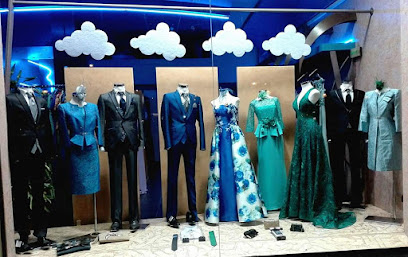
CUADRADO Pamplona
Discover bespoke men's clothing and exceptional tailoring at CUADRADO Pamplona, where style meets craftsmanship in the heart of Navarre.

MINISO
Explore the vibrant world of MINISO in Pamplona, where creativity meets affordability in a unique shopping experience.

Centro Comercial Avenida
Experience the vibrant shopping and dining scene at Centro Comercial Avenida in Pamplona, where local charm meets modern retail.

Kiehls
Explore Kiehl's in Pamplona for premium beauty care and skincare products that enhance your natural glow.

Carolina first dream
Discover stylish and high-quality baby clothing at Carolina First Dream, a delightful boutique in the heart of Pamplona.
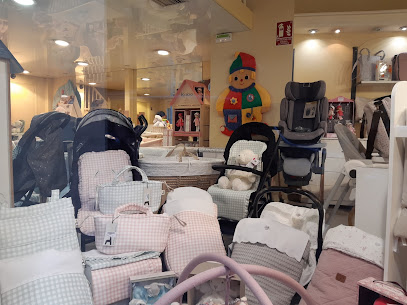
Ebano
Explore Ebano in Pamplona for unique gifts and board games that embody local culture. A must-visit for every tourist seeking special souvenirs.
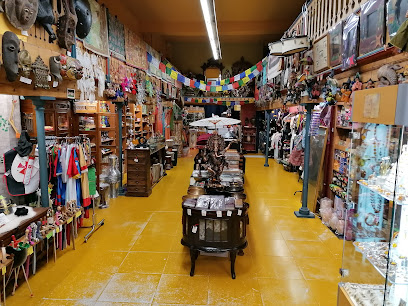
Pepe Jeans El Corte Inglés Pamplona
Explore stylish trends at Pepe Jeans El Corte Inglés Pamplona, your go-to destination for contemporary men's and women's fashion.

Kukuxumusu
Discover Kukuxumusu in Pamplona: a vibrant clothing store offering unique apparel and quirky novelties that capture the essence of Navarre.

CHONBAG STORE
Explore Chonbag Store in Pamplona for unique souvenirs and local products that embody the spirit of Navarra's rich culture.

El Ganso
Explore El Ganso in Pamplona for stylish clothing that blends contemporary flair with timeless elegance.

Ropa De Mujer En Pamplona Zucaymoda
Explore the elegant world of fashion at Ropa De Mujer En Pamplona Zucaymoda, a must-visit dress store for style-conscious travelers.

Essential bars & hidden hideouts
Bar Gaucho
Discover the vibrant flavors of Navarre at Bar Gaucho, Pamplona's beloved tapas bar, known for its authentic pintxos and lively atmosphere.

Txirrintxa
Discover the authentic tastes of Navarre at Txirrintxa, a premier grill restaurant in Pamplona offering delightful dishes in a vibrant setting.

Leyre Pub Restaurant
Discover the vibrant tastes of traditional Spanish cuisine at Leyre Pub Restaurant in Pamplona, a favorite spot for locals and tourists alike.

Bar Cerveceria La Estafeta
Discover the vibrant nightlife and local flavors at Bar Cerveceria La Estafeta in Pamplona, where every drink tells a story.

Bar La Navarra
Discover the vibrant atmosphere and authentic Spanish cuisine at Bar La Navarra in the heart of Pamplona, perfect for a memorable culinary experience.

Cerveceria Baztan
Experience the charm of Irish culture at Cerveceria Baztan, Pamplona's beloved pub offering traditional cuisine and a vibrant atmosphere.

The Gallipot
Discover The Gallipot in Pamplona – where Irish pub charm meets local culinary delights in a vibrant atmosphere.

Bar La Granja Pamplona
Discover the vibrant atmosphere of Bar La Granja Pamplona, where locals and tourists come together for refreshing drinks and good times.

The Beer Garden - Terraza Chill Out & Cócteles
Experience the vibrant atmosphere of The Beer Garden in Pamplona, where delicious cocktails and great food meet a chill-out terrace.

Infernu Taberna
Discover the lively Infernu Taberna in Pamplona, where craft beers and cocktails meet a warm, inviting atmosphere for an unforgettable night out.

Bar Monasterio
Discover the vibrant atmosphere and authentic tapas at Bar Monasterio, a culinary highlight in the heart of Pamplona, perfect for all food lovers.

La Basílica de Yul
Experience the vibrant culture and nightlife of Pamplona at La Basílica de Yul, a must-visit pub that celebrates the essence of Navarre.

Bar -Garazi Iruña- Taberna
Discover the charm of Pamplona at Bar - Garazi Iruña Taberna, a lively piano bar featuring enchanting music and delicious tapas in a welcoming atmosphere.

Kabiya
Experience the vibrant nightlife at Kabiya, Pamplona's top night club and cocktail bar, where great drinks and lively music await.

Woodstock Pamplona Bar
Discover the vibrant nightlife at Woodstock Pamplona Bar, where great drinks, live music, and an inviting atmosphere await every visitor.

Local Phrases
-
- HelloHola
[oh-lah] - GoodbyeAdiós
[ah-dee-ohs] - YesSí
[see] - NoNo
[noh] - Please/You're welcomePor favor/De nada
[por fah-vor/de nah-dah] - Thank youGracias
[grah-thyahs] - Excuse me/SorryPerdón/Lo siento
[pair-dohn/loh see-en-toh] - How are you?¿Cómo estás?
[koh-moh ehs-tahs] - Fine. And you?Bien. ¿Y tú?
[byen. ee too] - Do you speak English?¿Hablas inglés?
[ah-blahs een-glays] - I don't understandNo entiendo
[noh en-tyen-doh]
- HelloHola
-
- I'd like to see the menu, pleaseMe gustaría ver la carta, por favor
[may goo-stah-ree-ah ver lah kar-tah, por fah-vor] - I don't eat meatNo como carne
[noh koh-moh kahr-neh] - Cheers!¡Salud!
[sah-lood] - I would like to pay, pleaseMe gustaría pagar, por favor
[may goo-stah-ree-ah pah-gar, por fah-vor]
- I'd like to see the menu, pleaseMe gustaría ver la carta, por favor
-
- Help!¡Ayuda!
[ah-yoo-dah] - Go away!¡Vete!
[veh-teh] - Call the Police!¡Llama a la policía!
[yah-mah ah lah poh-lee-see-ah] - Call a doctor!¡Llama a un médico!
[yah-mah ah oon meh-dee-koh] - I'm lostEstoy perdido/a
[ehs-toy pair-dee-doh/ah] - I'm illEstoy enfermo/a
[ehs-toy ehn-fehr-moh/ah]
- Help!¡Ayuda!
-
- I'd like to buy...Me gustaría comprar...
[may goo-stah-ree-ah kohm-prar] - I'm just lookingSolo estoy mirando
[soh-loh ehs-toy mee-rahn-doh] - How much is it?¿Cuánto cuesta?
[kwan-to kwehs-tah] - That's too expensiveEs demasiado caro
[ehs deh-mah-syah-doh kah-roh] - Can you lower the price?¿Puedes bajar el precio?
[pweh-dehs bah-har el pree-syoh]
- I'd like to buy...Me gustaría comprar...
-
- What time is it?¿Qué hora es?
[keh oh-rah ehs] - It's one o'clockEs la una
[ehs lah oo-nah] - Half past (10)Y media
[ee meh-dee-ah] - MorningMañana
[mah-nyah-nah] - AfternoonTarde
[tahr-deh] - EveningNoche
[noh-cheh] - YesterdayAyer
[ah-yehr] - TodayHoy
[oy] - TomorrowMañana
[mah-nyah-nah] - 1Uno
[oo-noh] - 2Dos
[dohs] - 3Tres
[trehs] - 4Cuatro
[kwah-troh] - 5Cinco
[theen-koh] - 6Seis
[says] - 7Siete
[syeh-teh] - 8Ocho
[oh-choh] - 9Nueve
[nweh-veh] - 10Diez
[dyehth]
- What time is it?¿Qué hora es?
-
- Where's a/the...?¿Dónde está...?
[dohn-deh ehs-tah] - What's the address?¿Cuál es la dirección?
[kwal ehs lah dee-rehk-syon] - Can you show me (on the map)?¿Puedes mostrarme (en el mapa)?
[pweh-dehs mohs-trar-meh (en el mah-pah)] - When's the next (bus)?¿Cuándo es el próximo (autobús)?
[kwan-doh ehs el proh-ksy-moh (ow-toh-boos)] - A ticket (to ....)Un billete (a ...)
[oon bee-yeh-teh (ah ...)]
- Where's a/the...?¿Dónde está...?
History of Pamplona
-
Pamplona, known in Basque as Iruña, was founded by the Roman general Pompey in 75 BC. The city was originally named Pompaelo in his honor. It served as an important military outpost during the Roman Empire, strategically situated in the region of Navarre.
-
In the early Middle Ages, Pamplona became the capital of the Kingdom of Pamplona, later known as the Kingdom of Navarre. It played a crucial role in the Reconquista, the Christian reconquest of the Iberian Peninsula from Muslim rule. Sancho III of Navarre, also known as Sancho the Great, was one of the most influential monarchs of this period, extending his influence across much of northern Spain.
-
Pamplona is one of the key cities along the Camino de Santiago, the ancient pilgrimage route to the shrine of the apostle Saint James in Santiago de Compostela. Pilgrims have been passing through Pamplona for centuries, contributing to its rich cultural tapestry and historical significance.
-
In the late 16th century, King Philip II of Spain ordered the construction of the Citadel of Pamplona. This star-shaped fortress was built to defend the city from potential invasions. It remains one of the best-preserved examples of Renaissance military architecture in Europe.
-
The San Fermín Festival, held annually in July, is one of the most famous events in Pamplona. It dates back to medieval times and was popularized by Ernest Hemingway's novel 'The Sun Also Rises'. The festival features the running of the bulls (Encierro), where participants run in front of a group of bulls through the city's streets.
-
During the Spanish Civil War (1936-1939), Pamplona was a stronghold for the Nationalist forces led by General Francisco Franco. The city witnessed significant political and social upheaval during this period, which had lasting impacts on its development and cultural landscape.
-
In recent decades, Pamplona has grown into a vibrant cultural and economic center. It is known for its green spaces, such as the Taconera Gardens, and its commitment to preserving its historical heritage while embracing modernity. The University of Navarra, a prestigious institution, also contributes to the city's dynamic atmosphere.
Pamplona Essentials
-
Pamplona is well-connected to various major cities in Spain and Europe. The nearest airport is Pamplona Airport (PNA), which is about 6 km from the city center and offers domestic flights. For international flights, you can fly to Bilbao Airport (BIO) or Madrid-Barajas Airport (MAD) and then take a train or bus to Pamplona. Renfe, the Spanish national railway company, operates regular trains from Madrid, Barcelona, and other major cities to Pamplona. Buses are another convenient option, with several companies offering routes to Pamplona from different parts of Spain.
-
Pamplona has an efficient public transportation system consisting of buses that cover the entire city and surrounding areas. The bus service is operated by Transporte Urbano Comarcal, with tickets available for purchase on board or via contactless payment. Taxis are readily available and can be hailed on the street or booked via phone or app. For those who prefer to explore on foot, Pamplona's compact city center makes walking a pleasant option. Additionally, bike rentals are available for those who wish to explore the city on two wheels.
-
The official currency in Spain is the Euro (EUR). Credit and debit cards are widely accepted in Pamplona, including in hotels, restaurants, and shops. ATMs are plentiful throughout the city, allowing you to withdraw cash as needed. However, it is advisable to carry some cash, especially for small purchases or in markets. Note that some smaller establishments may not accept cards, so having cash on hand is always a good idea.
-
Pamplona is generally a safe city for tourists, but it's wise to take standard precautions. Be cautious of pickpockets, especially in crowded areas like the Plaza del Castillo and during the San Fermín festival. Avoid walking alone in poorly lit areas at night, particularly in neighborhoods away from the city center. Keep your belongings secure and be vigilant in busy places. If you have any concerns, do not hesitate to contact the local police.
-
In case of an emergency, dial 112 for immediate assistance. This number connects you to emergency services, including police, fire, and medical services. Pamplona has several hospitals and clinics, with the Hospital Universitario de Navarra being the largest. Pharmacies are also widely available, and many are open 24 hours. It is advisable to have travel insurance that covers medical emergencies.
-
Fashion: Do dress comfortably but modestly, particularly when visiting religious sites. Avoid overly revealing clothing. Religion: Do respect local customs and traditions, especially during religious events. Public Transport: Do be courteous to fellow passengers and give up your seat to the elderly or those in need. Don't eat or drink on public transport. Greetings: Do greet people with a handshake or a friendly 'Hola'. Eating & Drinking: Do try local specialties such as pintxos and accept food offerings graciously. Don't rush meals; eating is a social activity in Spain, so take your time.
-
To experience Pamplona like a local, visit the local markets such as the Mercado de Santo Domingo for fresh produce and local delicacies. Engage with the locals, who are friendly and often willing to share insights about their city. Take a leisurely stroll through the old town and enjoy a café con leche at a local café. Don’t miss the chance to explore the city's rich history by visiting landmarks like the Pamplona Cathedral and the Plaza del Castillo. If you're visiting during the San Fermín festival, make sure to observe the traditional events and festivities, but do so responsibly and respectfully.
Trending Landmark in Pamplona
-
Ciudadela de Pamplona
-
Plaza de Toros
-
Plaza del Castillo
-
Café Iruña
-
Catedral Metropolitana de Santa María la Real de Pamplona
-
Encierro/Entzierroa Monument
-
El Sadar Stadium
-
Plaza de los Fueros
-
Saint Nicholas Church
-
Monument to the Fueros
-
Nafarroako Museoa
-
Ayuntamiento de Pamplona
-
Portal of Zumalacarregui
-
La Vuelta del Castillo - Gazteluko Ibilaldia
-
Iglesia de San Saturnino
Nearby Cities to Pamplona
-
Things To Do in San Sebastián
-
Things To Do in Bilbao
-
Things To Do in Huesca
-
Things To Do in Lourdes
-
Things To Do in Zaragoza
-
Things To Do in Burgos
-
Things To Do in Santander
-
Things To Do in Lleida
-
Things To Do in Bordeaux
-
Things To Do in Arinsal
-
Things To Do in La Massana
-
Things To Do in El Serrat
-
Things To Do in Andorra la Vella
-
Things To Do in Ordino
-
Things To Do in Escaldes-Engordany












